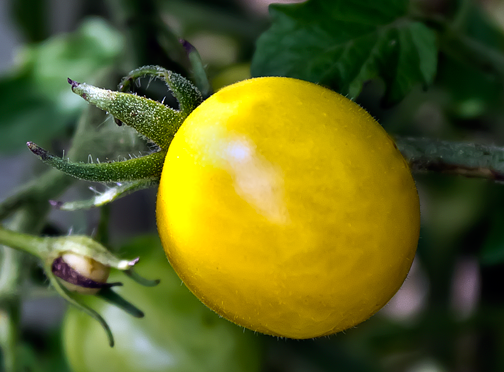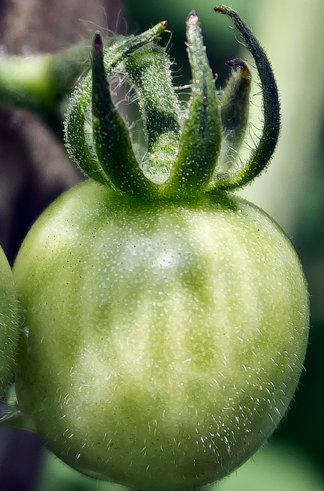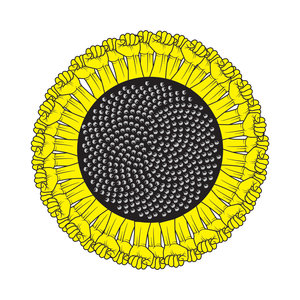Wild Galápagos Tomatoes – Translucent Little Gems
 I love this tomato. When I found it back in January at Terrior Seed Company, it captured my imagination. The Galápagos Islands are amazing, and to have the opportunity to grow something I'm so passionate about from there, and to be able to eat it too, well it doesn't get much better than that. It lived up to what I imagined, and has fascinated me ever more.
I love this tomato. When I found it back in January at Terrior Seed Company, it captured my imagination. The Galápagos Islands are amazing, and to have the opportunity to grow something I'm so passionate about from there, and to be able to eat it too, well it doesn't get much better than that. It lived up to what I imagined, and has fascinated me ever more.
What I didn't expect was how translucent these little tomatoes are. If they catch the light right, they shimmer like little gems on the plant. If you look closely at the right hand side of the photo above, you can see below the skin of the tomato. It's easier to see before they ripen.
 The photo on left is a green one, and the white lines are the cells below the skin. Being a wild tomato, they are very small. The average size is slightly smaller than a dime, with some almost as small as a currant. I did peel some, and the skin is indeed transparent.
The photo on left is a green one, and the white lines are the cells below the skin. Being a wild tomato, they are very small. The average size is slightly smaller than a dime, with some almost as small as a currant. I did peel some, and the skin is indeed transparent.
For a small tomato though, it packs a lot of flavor. So much so that it comes close to Black Cherry, which is my favorite cherry variety. Nice balance of sweet and acid, with some salty undertones. Perhaps it's the high tolerance of salt that imparts these tomatoes with that salty zest. They can be found growing close to the beach, in between rocks on the Galápagos.
The salt resistance has plant breeders excited along with its natural resistance to whiteflies. These characteristics are being bred into other tomato varieties. Its been a very wet summer here in southern New Jersey, and early blight, and black spot has impacted all the other tomatoes I'm growing, I haven't seen a sign of it on these plants.
They naturally sprawl, so they are dense, compact, and bush-like when staked. They are very prolific, and from I read, they produce up until frost. They also produced early, so a long season of hearty and flavorful tomatoes is something I'll take every year. There is a second variety from the Galápagos, Sara's Galapagos, and are red. They don't seem to be a true wild tomato either.
The best thing for me though is the giant tortoises of the Galápagos are said to like these tomatoes. To be able to share a taste with these magnificent and graceful creatures a half a world away is a true gift of nature, and places these tomatoes in a special part of my heart.
